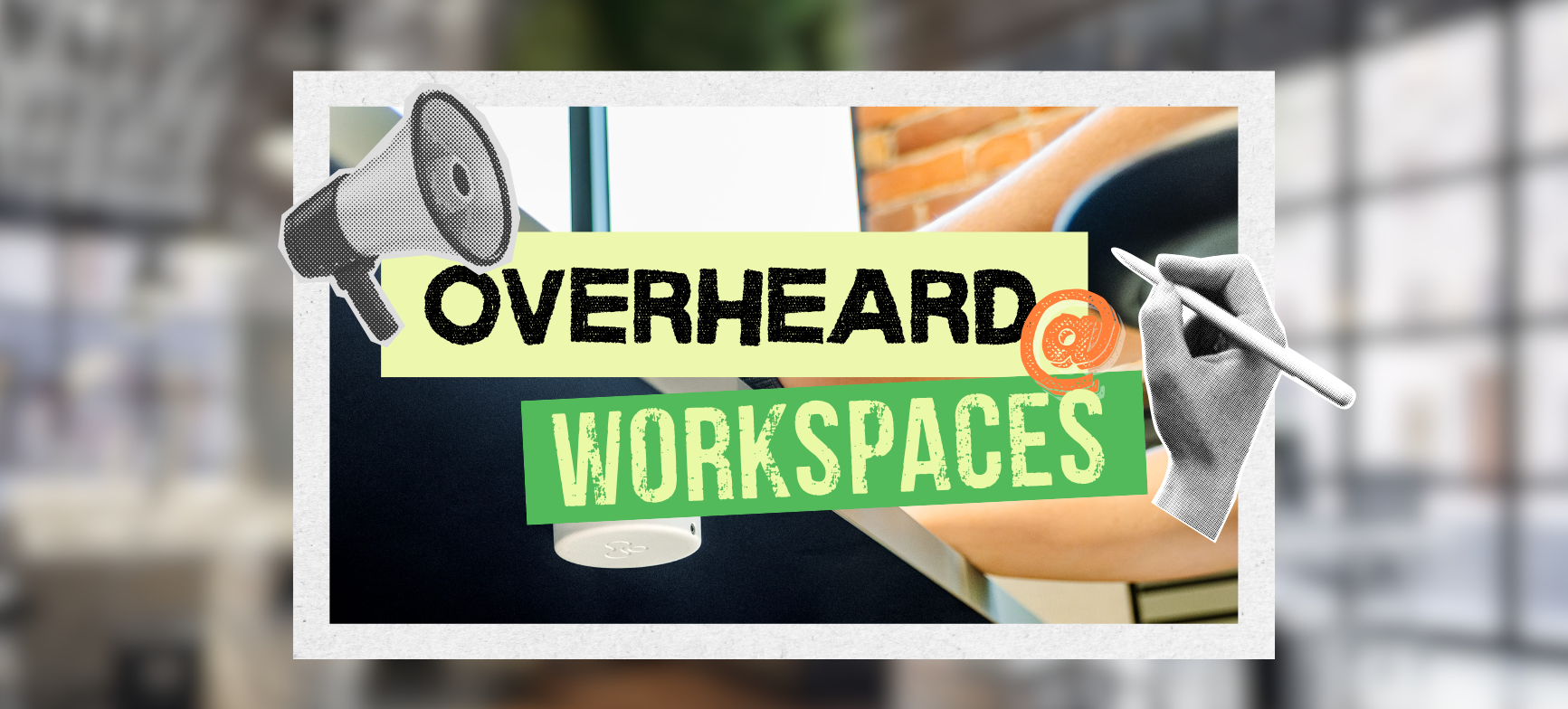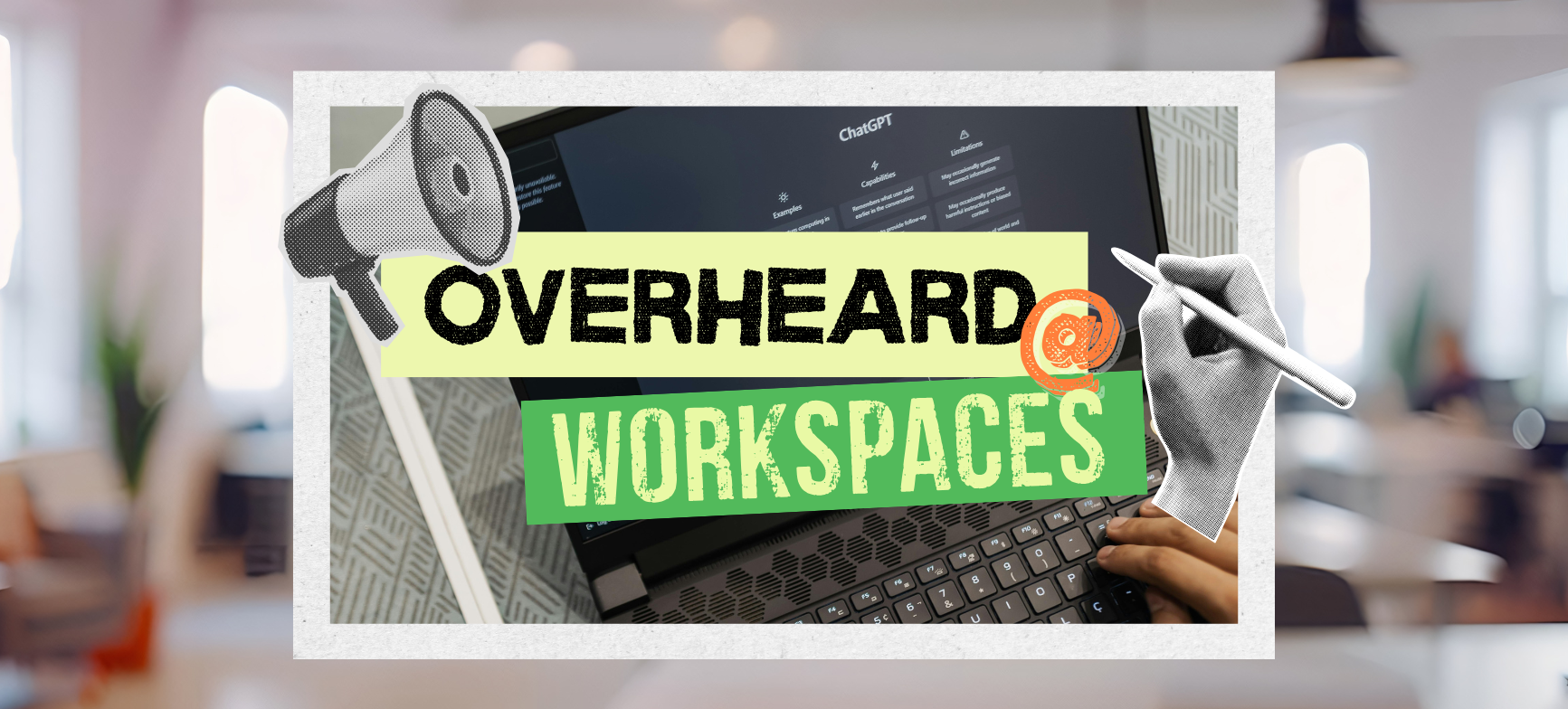What if your workplace tech stack didn’t exist and you had the chance to build it from scratch?
That’s the scenario a group of workplace and real estate leaders explored in a candid, closed-door deep dive session at WorkSpaces in Napa.
The challenge on the table:
How do we rebuild workplace tech to reduce friction and support real human connection in hybrid work?
The answers didn’t come from vendor decks or product demos. They came from lived experience, operational friction, and a shared desire to make the workplace feel more intentional and less... exhausting.
Here’s a look at the ideas and insights that surfaced during the conversation:
Start with People, Not Tools
To kick things off, the group was asked: If your team came back to work with zero legacy tools, how would you rebuild the experience from the ground up?
The conversation quickly moved beyond desk booking and apps. Instead, leaders focused on what actually drives better work:
- Designing for connection instead of constant communication
- Building async-by-default workflows that support flexibility
- Reducing notification overload, especially for distributed teams
- Acknowledging cultural and generational differences in how people prefer to work
Rather than enforcing camera-on policies or Slack responsiveness, many leaned into empathy, choice, and psychological safety, especially for younger or remote-first employees who never “grew up” in the office.
“If you want people to come in, the tech has to feel like a friend, not a gatekeeper.”
Don’t Just Automate — Orchestrate
Automation is expected at this point. What teams really want is orchestration, workplace tech that quietly anticipates needs and removes friction without asking for more attention.
- AI that seats you near key collaborators based on your calendar
- Check-in flows that rely on passive signals, not manual tasks
Systems that reduce decisions, rather than adding to them
One participant put it plainly:
“If employees have to wonder why they’re opening the workplace app, they won’t.”
Instead of flashy interfaces, the real opportunity lies in context-aware background systems that support how people work, without forcing them to plan their day around software.
Tech Should Show Up Like the Office Does
Some things shouldn't require a second thought: Wi-Fi, monitors, room tech, access control. When these basics break down, everything else does too.
But tech isn't only about function. It also has the power to reinforce culture, build trust, and create a sense of community when it's designed with intention.
Tools that show who’s in the office can help spark casual interactions, but they’re not the reason people show up.
The goal isn’t to wow with features. It’s to remove friction and create the conditions for connection.
Kill the Tool Sprawl
Nearly everyone in the room shared frustration with fragmented systems: One app for support tickets, one for room booking, another for workplace requests
It’s too much. It creates login fatigue and kills adoption.
What’s needed is either a unified experience layer or tighter integrations that make things feel seamless.
“If you make people log in five times, they just won’t bother.”
Let the Data Speak — But Not Alone
Utilization data only tells part of the story. Sensors, badge swipes, and Wi-Fi data can help validate trends, but they’re often misleading or too high-level.
Without qualitative inputs like surveys, interviews, and ethnographic research, teams miss the why behind the numbers
One example shared:
People were sitting in their cars outside the office. The data showed inactivity, but not the reason. It turned out the breakroom fridge was broken.
Don’t Overbuild — Load Balance Instead
Mandated peak days are causing artificial crowding. Some companies are even adding more space as a reaction, instead of addressing the root issue.
A smarter approach:
- Spread demand with anchor days and attendance planning
- Align training, collaboration, and events with smart scheduling tools
- Use modular designs and “tech suites” that scale with behavior, not square footage
Several leaders warned that without better insights, RTO policies risk solving the wrong problem by defaulting to more real estate.
Intangible Work, Tangible Friction
The group agreed: workplace strategy still treats space like it’s the center of work. But the way we actually work is increasingly intangible.
- Teams are distributed, but space decisions remain centralized
- Employees want location equity, not just the option to work remotely, but the ability to work well anywhere
Most portfolios aren’t built for this shift yet, especially in legacy orgs with operational or ideological inertia
“The tools we design today have to serve the teams we’ll have in 2030, not 2019.”
Final Word
Frictionless workplace tech doesn’t mean more tools, it means fewer steps, smarter integration, and tech that aligns with how people actually work.
Want to be in the room for conversations like this?
Request an invite to WorkSpaces →

Posted by
Join us at WorkSpaces!
The retreat for corporate real estate and workplace innovators.
Oct 4-6, 2026 | Santa Barbara, CA




-3.png)
-3.png)

-2.png)

Comments